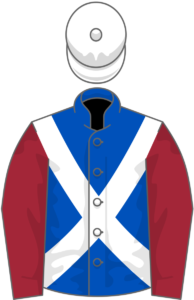Did two horses called Peter Simple run in the Grand National?
The short answer is yes, they did, but thankfully not in the same year. Aintree aficionados may already be aware that Peter Simple – a bay trained and ridden by Tom Cunningham, on the first occasion, and Tom Olliver, on the second – won the Grand National twice, in 1849 and 1853. Indeed, that Peter Simple, who was a 15-year-old when gallantly holding off the 1852 winer and favourite, Miss Mowbray, on the latter occasion has the distinction of being the oldest winner in the history of the Grand National.
However, the first Peter Simple to run in the Grand National was a grey, who made his debut, as a 7-year-old, in 1841, when he finished a never-nearer third, beaten 2 lengths and neck, behind Charity. In fact, that Peter Simple went on to contest the next five renewals of the Grand National, in which his complete form figures were 33PP2P.
Of course, the Jockey Club was established in 1750 and the first volume of the General Stud Book was published by James Weatherby in 1791. However, in the early, pioneering days of the Grand National, horses did not need to be registered with a unique name, as they do today, so different horses with the same name were commonplace. For the record, ‘Peter Simple’ was the title character of a novel written by Captain Frederick Marryat and first published in 1833, so the name was very much of the time.
 In short, since the first official running of the Grand National, in 1839, just two winners have been trained in Scotland. The first of them was Rubstic, owned by former Rugby Union international John Douglas, trained by John Leadbetter, near Denholm in the Scottish Borders, and ridden by Maurice Barnes. Sent off at 25/1, the 10-year-old was involved in a ding-dong battle with his nearest pursuers, Zongalero and Rough And Tumble, before drawing away close home to win by 1½ lengths.
In short, since the first official running of the Grand National, in 1839, just two winners have been trained in Scotland. The first of them was Rubstic, owned by former Rugby Union international John Douglas, trained by John Leadbetter, near Denholm in the Scottish Borders, and ridden by Maurice Barnes. Sent off at 25/1, the 10-year-old was involved in a ding-dong battle with his nearest pursuers, Zongalero and Rough And Tumble, before drawing away close home to win by 1½ lengths.